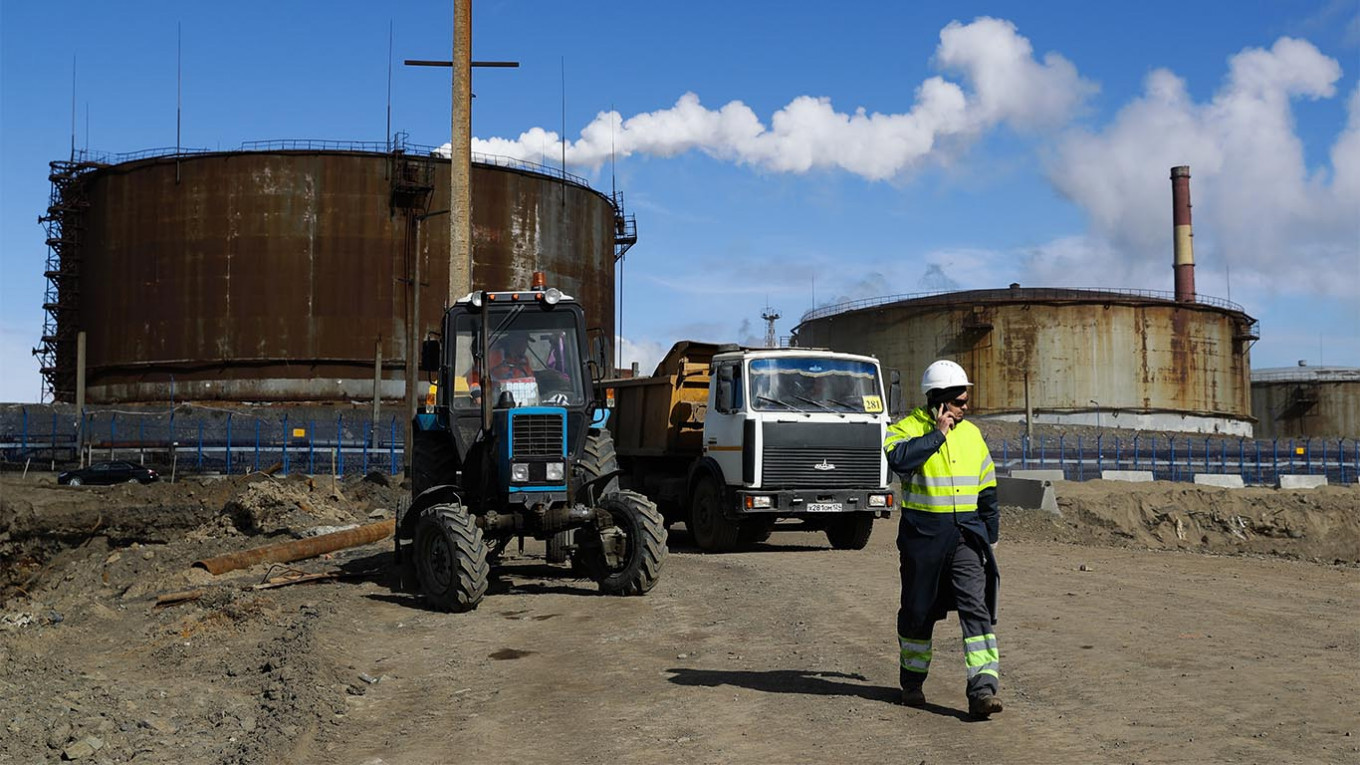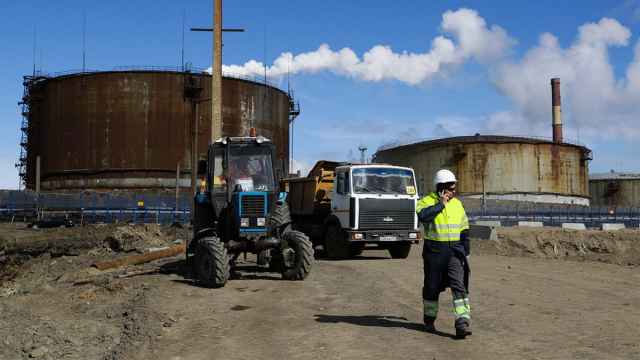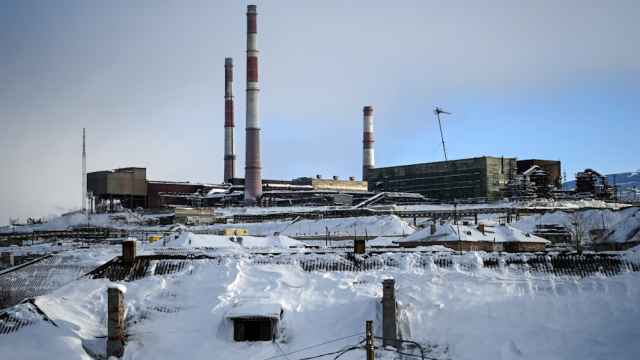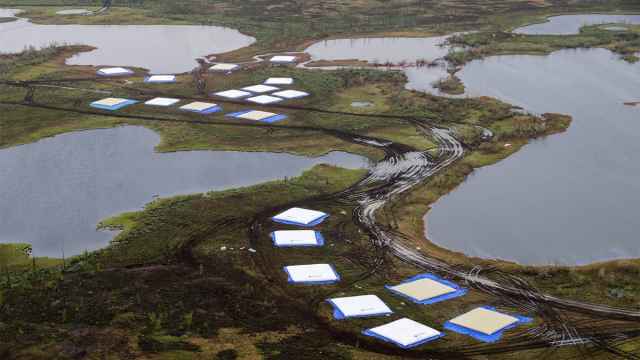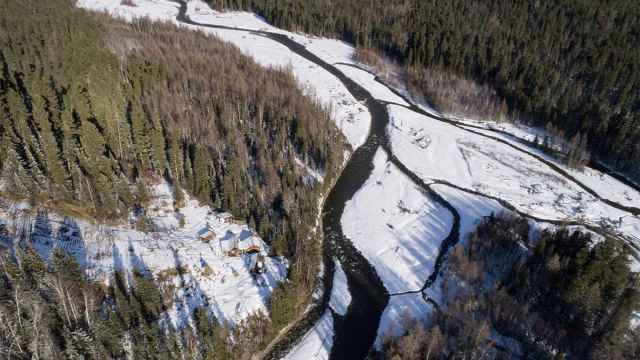A cocktail of design flaws, management failures and rising temperatures made the worst oil spill in Russia’s modern history — and the most damaging ever inside the Arctic circle — “inevitable,” a report commissioned by Russian metals giant Nornickel has said.
The report is the work of consulting group Environmental Resources Management (ERM), which Nornickel commissioned to investigate the causes behind the May oil spill at one of its sites near the city of Norilsk in Russia’s Siberian north.
Some 21,000 tons of oil poured into the surrounding ground and waterways after a diesel oil tank collapsed on May 29, with fuel found in rivers and lakes up to 30 kilometers (19 miles) away. Environmentalists said it was the largest-ever oil spill in the Arctic.
In the report, a summary of which was published Thursday, ERM criticized Nornickel for not investigating potential warning signs in the years leading up to the disaster, and said the firm adopted a “compliance mindset” aimed at pleasing regulators and inspectors. The scale of the spill was exacerbated by the company’s failure to understand how catastrophic the consequences of such a spill could be, and it shunned establishing safety systems which could have stemmed it, ERM said.
The report’s findings were presented to Nornickel’s board earlier this week.
In July, Russian authorities slapped Nornickel with a record 148 billion ruble ($2 billion) fine, a sum the company is currently contesting.
Toxic failures
ERM said the immediate cause of the spill was “increasing permafrost temperatures,” which weakened the support structure under the tank. However, it said the disaster would have been avoidable were it not for flaws in the tank’s installation, which only became known after the disaster.
Several reinforced concrete columns — “piles” — placed under the tank to act as its foundation were significantly shorter than they should have been, as outlined in the tank’s design documents. This meant some of the columns were resting on permafrost rather than the more solid bedrock beneath as intended, leaving it more susceptible to warm weather.
“If all piles had been installed as designed into the bedrock, this failure would not have happened,” the report concluded.
In arguing that the tank could have withstood the thawing ice if it had been installed correctly, the report seems to support the view of Russian authorities, which rejected Nornickel’s previous claims that rising temperatures were the main cause of the disaster. A ventilation system to keep the ice under the tank cold was also flawed, ERM found.
‘Compliance mindset’
ERM laid significant blame on Nornickel’s management for failing to prevent the disaster and control the spill once it had occurred.
Executives had an “insufficient appreciation of the potential implications of failure,” ERM said, criticizing the “absence of a management system that allowed for the control and mitigation of such events.” Nornickel paid “insufficient attention” to the potential risks of failure, adding: “the levels of management and safeguarding are below that expected.”
The firm’s “compliance mindset — rather than risk understanding and risk management — led to missed warning signs in 2018,” ERM added, citing an inspection which found an unexpected gap between the base of the tank and its foundations two years before the catastrophe.
Instead, Nornickel relied on the fact that Russian inspectors had previously deemed the tank safe for use as a reason not to address the potential vulnerabilities.
Part of the reason Nornickel failed to prepare for a possible disastrous spill was because they assessed its probability in any given year at just 0.0015%, ERM said. The firm also believed the consequences — should it happen — would be manageable.
Both those assessments turned out to be wrong.
This dismissiveness led to a “lack of immediate resources and response planning required to swiftly react to such a major event,” ERM said. For instance, a safety “bund” wall around the tank was too small and weak to withstand a major spill, and Nornickel did not have “containment booms” ready to deploy along the nearby waterways to stop the oil from spreading around the region.
In conclusion, ERM said Nornickel “had no appreciation of the impact and no effective controls.”
“This, in combination with inadequate appreciation of the implications of increased climate warming, missed warning signs and the apparent error in pile installation (only apparent post-incident) created the conditions whereby such a failure becomes inevitable.”
No access
The report was paid for by Nornickel as part of its investigation into the disaster, as well as its legal battle to avoid paying the $2 billion fine.
Environmental groups such as the WWF have been wary of Nornickel’s approach to the disaster and fallout, accusing the firm of originally trying to “cover up” the spill. The extent only became known after satellite images were published showing the surrounding polluted waterways. The clean-up is expected to take years.
ERM said it was not able to gain access to Nornickel facilities until mid-September — more than three months after the spill — to conduct its investigation. “By this time, the tank had been entirely removed. Consequently, our assessment of the root causes of failure is based on available documentation, photographs and interviews only,” it said.
Additionally, the investigation “did not include any physical activities such as environmental sampling for analysis, borehole drilling or testing associated with the tank or foundations,” ERM said in the introduction to the report.
In a statement Thursday, Nornickel said: “Regardless of the causes of the incident, the company takes responsibility for the full clean-up … We remain firmly committed to do all that is necessary to minimise the risks of environmental impact. We also reiterate our commitment to fully rehabilitate the area impacted by the diesel fuel spill incident.”
Russia has seen an increase in the number of reported environmental disasters in recent years as ecologists say the signs of rapidly warming temperatures in the country’s vast Arctic region are becoming more acute and visible.
A Message from The Moscow Times:
Dear readers,
We are facing unprecedented challenges. Russia's Prosecutor General's Office has designated The Moscow Times as an "undesirable" organization, criminalizing our work and putting our staff at risk of prosecution. This follows our earlier unjust labeling as a "foreign agent."
These actions are direct attempts to silence independent journalism in Russia. The authorities claim our work "discredits the decisions of the Russian leadership." We see things differently: we strive to provide accurate, unbiased reporting on Russia.
We, the journalists of The Moscow Times, refuse to be silenced. But to continue our work, we need your help.
Your support, no matter how small, makes a world of difference. If you can, please support us monthly starting from just $2. It's quick to set up, and every contribution makes a significant impact.
By supporting The Moscow Times, you're defending open, independent journalism in the face of repression. Thank you for standing with us.
Remind me later.



